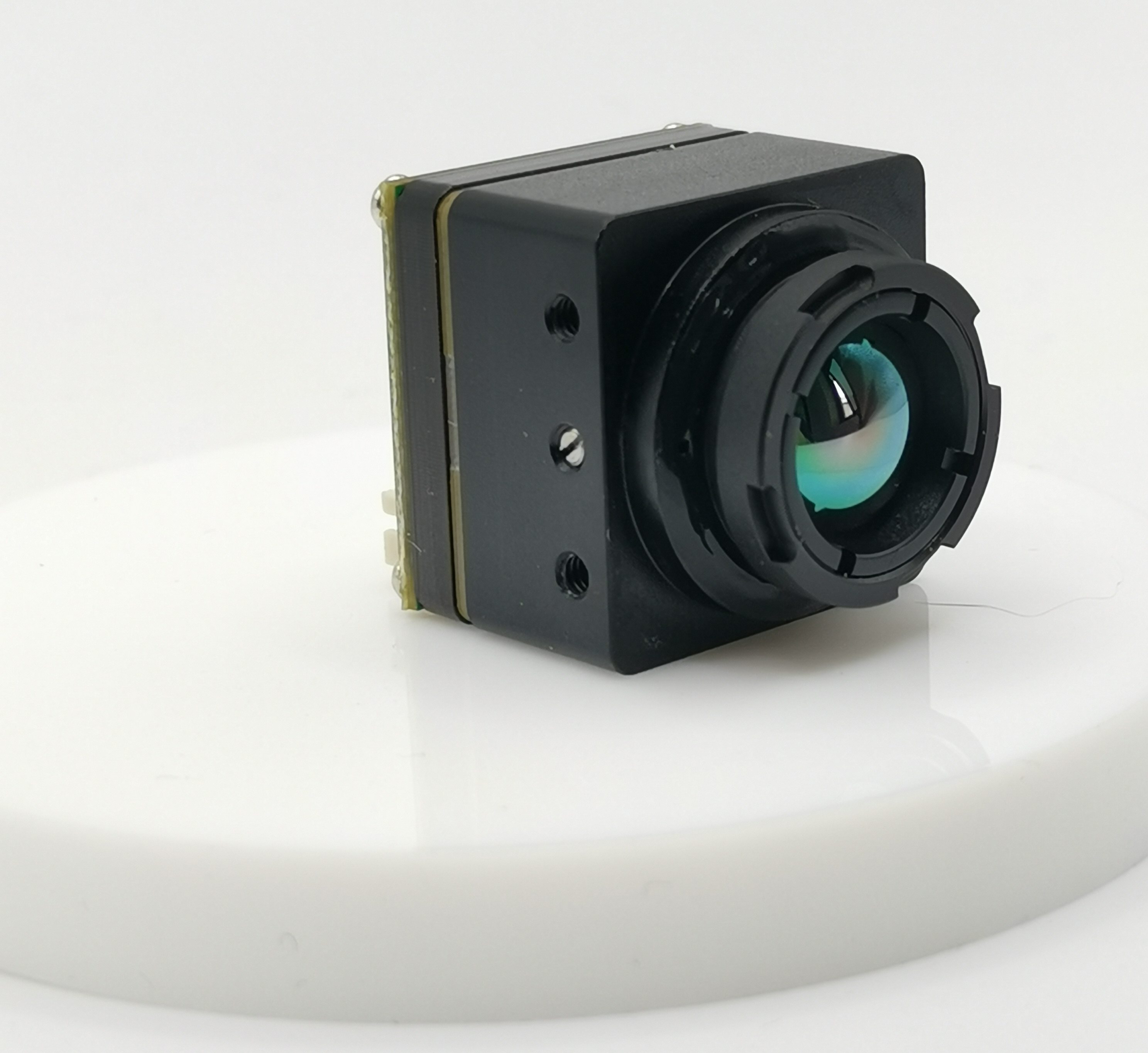iSun Analog FPV Thermal Camera vs. Dual-Sensor Thermal Cameras: A Detailed Comparison

Exploring the Basics
When it comes to drone technology, understanding the role of FPV Thermal Cameras is crucial. These cameras are designed to capture thermal images and are an essential tool for various applications. Let's delve into the basics of FPV Thermal Cameras and explore the key features to look for in a drone camera.
What is an FPV Thermal Camera?
Definition and Uses
An FPV Thermal Camera is a specialized device that captures thermal imagery using infrared radiation. Unlike traditional cameras, which rely on visible light, these cameras detect heat signatures emitted by objects. This technology enables users to visualize temperature variations, making it invaluable for tasks such as search and rescue operations, building inspections, and wildlife monitoring.
Importance in Drone Technology
In the realm of drone technology, FPV Thermal Cameras play a pivotal role in expanding the capabilities of unmanned aerial vehicles (UAVs). By integrating thermal imaging capabilities, drones can be used for tasks such as identifying heat leaks in buildings, locating missing persons in remote areas, and conducting surveillance operations with enhanced effectiveness.
Key Features to Look For in a Drone Camera
Resolution and Sensitivity
When evaluating a drone camera, it's essential to consider its resolution and sensitivity. Higher resolution allows for clearer thermal images, while greater sensitivity enables the camera to detect subtle temperature variations accurately.
Range and Durability
The range of a drone camera refers to its ability to capture thermal data from varying distances. Additionally, durability is crucial for withstanding environmental factors such as wind, moisture, and temperature fluctuations during prolonged operation.
By understanding these fundamental aspects of FPV Thermal Cameras and key features to consider when choosing a drone camera, enthusiasts can make informed decisions regarding their aerial imaging needs.
Diving into the iSun Analog FPV Thermal Camera
As we delve into the realm of thermal imaging for drones, it's essential to explore the unique features and capabilities of the iSun analog FPV thermal camera. This innovative device offers a range of functionalities that set it apart in the world of aerial imaging technology.
Unique Features of the iSun Analog FPV Thermal Camera
Analog Technology in a Digital World
The iSun analog FPV thermal camera stands out due to its utilization of analog technology in an increasingly digital landscape. While many thermal cameras have transitioned to digital formats, the analog approach employed by the iSun camera offers distinct advantages. It provides a seamless integration with existing analog systems and ensures compatibility with a wide range of drone models, making it a versatile choice for enthusiasts and professionals alike.
Integration with Drones
One of the standout features of the iSun analog FPV thermal camera is its seamless integration with drones. This camera is designed to work harmoniously with various drone platforms, enhancing their capabilities by providing real-time thermal imaging data. The integration process is streamlined, allowing users to easily mount and connect the camera to their drones, thereby expanding their aerial imaging potential.
Pros and Cons of the iSun Analog FPV Thermal Camera
What Sets It Apart
The iSun analog FPV thermal camera distinguishes itself through its ability to deliver reliable thermal imaging using analog technology. This sets it apart from many digital counterparts, offering a unique solution for capturing thermal data in diverse environments. Additionally, its compatibility with different drone models makes it an accessible option for drone enthusiasts seeking to incorporate thermal imaging into their aerial activities.
Limitations to Consider
While the iSun analog FPV thermal camera boasts numerous advantages, there are certain limitations that users should consider. As an analog device, it may have constraints when compared to advanced digital counterparts in terms of image processing and data storage capabilities. Additionally, users may need to ensure compatibility with their existing equipment before integrating this camera into their drone setups.
Understanding Dual-Sensor Thermal Cameras for Drones
As technology continues to advance, the emergence of dual-sensor thermal cameras for drones has revolutionized aerial imaging capabilities. These innovative devices combine the power of two distinct sensors to capture both visual and thermal data simultaneously, offering a range of advantages for drone enthusiasts and professionals.
The Advantages of Dual-Sensor Technology
Enhanced Imaging Capabilities
The integration of dual sensors in thermal cameras elevates imaging capabilities to new heights. By capturing visual and thermal data in tandem, these cameras provide a comprehensive view of the surroundings, enabling users to overlay thermal imagery onto visual footage. This fusion enhances situational awareness, allowing for more informed decision-making during operations such as search and rescue missions, infrastructure inspections, and environmental monitoring.
Versatility in Applications
Dual-sensor thermal cameras are renowned for their versatility across various applications. Whether it's conducting precision agriculture assessments, monitoring wildlife populations, or inspecting critical infrastructure, the combination of visual and thermal data offers unparalleled insights. The ability to switch between visual and thermal modes seamlessly makes these cameras indispensable tools for diverse drone operations.
Comparing to Single-Sensor Cameras
Why Dual-Sensor Might Be the Better Choice
When comparing dual-sensor to single-sensor thermal cameras, the advantages become evident. The simultaneous capture of visual and thermal data provides a holistic perspective that single-sensor cameras may not achieve. This comprehensive approach enhances operational efficiency and effectiveness, making dual-sensor technology an appealing choice for demanding aerial imaging tasks.
Situations Where Single-Sensor Suffices
While dual-sensor technology offers significant benefits, there are situations where single-sensor cameras suffice. For applications where specific focus on either visual or thermal data is required without the need for simultaneous capture, single-sensor cameras can be suitable. Additionally, budget constraints or specific operational requirements may make single-sensor options more practical in certain scenarios.
Side-by-Side Comparison
As drone enthusiasts and professionals weigh their options for thermal imaging solutions, a side-by-side comparison of the iSun Analog FPV Thermal Camera and Dual-Sensor Thermal Cameras provides valuable insights into their performance, cost-effectiveness, and suitability for various conditions.
Performance in Various Conditions
Daytime and Nighttime Use
The performance of thermal cameras during both daytime and nighttime operations is a critical consideration for drone users. The iSun Analog FPV Thermal Camera excels in capturing thermal data regardless of lighting conditions, making it a reliable choice for round-the-clock aerial imaging tasks. Its analog technology ensures consistent performance, allowing users to obtain clear thermal imagery even in low-light environments.
On the other hand, Dual-Sensor Thermal Cameras offer enhanced versatility by providing visual and thermal data simultaneously. This capability proves advantageous during daytime operations when visual footage complements thermal imagery, offering a comprehensive view of the surroundings. Additionally, the integration of dual sensors ensures optimal performance in varying light conditions, making these cameras well-suited for dynamic aerial missions.
Adverse Weather Conditions
When operating drones in adverse weather conditions such as rain, snow, or fog, the resilience of thermal cameras becomes paramount. The iSun Analog FPV Thermal Camera demonstrates robustness in challenging weather scenarios due to its durable design and analog technology. Its ability to withstand environmental elements ensures consistent thermal imaging capabilities even in inclement weather.
In contrast, Dual-Sensor Thermal Cameras exhibit resilience in adverse weather conditions through advanced protective features that safeguard the integrated sensors from moisture and temperature fluctuations. This durability allows drone operators to confidently execute missions in challenging environments without compromising on imaging quality or reliability.
Cost-Effectiveness and Value
Initial Investment vs. Long-Term Benefits
When evaluating the cost-effectiveness of thermal imaging solutions for drones, considering the initial investment versus long-term benefits is crucial. The iSun Analog FPV Thermal Camera offers an accessible entry point into thermal imaging technology with its analog approach, providing value for enthusiasts seeking to incorporate thermal capabilities into their drone setups without substantial upfront costs. Its affordability makes it an attractive option for those prioritizing budget-conscious investments.
Conversely, Dual-Sensor Thermal Cameras require a higher initial investment due to their advanced dual-sensor technology and enhanced imaging capabilities. While this may represent a greater upfront cost, the long-term benefits of having access to both visual and thermal data simultaneously can outweigh the initial investment for professional users requiring comprehensive aerial imaging solutions.
Maintenance and Upkeep
Maintenance considerations play a significant role in assessing the overall value of thermal cameras for drones. The iSun Analog FPV Thermal Camera boasts simplicity in maintenance requirements owing to its analog design with fewer electronic components compared to digital counterparts. This streamlined maintenance approach reduces upkeep costs and ensures operational efficiency over time.
In contrast, Dual-Sensor Thermal Cameras necessitate diligent maintenance due to their intricate dual-sensor setup and advanced technological features. While these cameras offer unparalleled imaging capabilities, they may entail higher maintenance costs associated with sensor calibration, firmware updates, and component servicing to preserve their optimal functionality.
By examining the performance attributes across different lighting conditions, assessing cost-effectiveness factors such as initial investment versus long-term benefits, and considering maintenance requirements, drone enthusiasts can make informed decisions when selecting the most suitable thermal imaging solution for their specific needs.
Final Thoughts
As drone technology continues to evolve, making the right choice for your specific aerial imaging needs is paramount. Assessing your requirements and considering future drone technology trends can guide you in selecting the most suitable thermal imaging solution for your endeavors.
Making the Right Choice for Your Needs
When evaluating thermal cameras for drones, it's essential to assess your requirements comprehensively. Consider the nature of your aerial missions, the environmental conditions in which you operate, and the specific imaging capabilities that align with your objectives. By identifying these key factors, you can narrow down the options and prioritize features that directly contribute to the success of your drone operations.
Furthermore, staying informed about future drone technology trends is crucial in making an informed decision. As advancements in aerial imaging continue to unfold, being aware of emerging technologies and their potential impact on thermal imaging solutions can shape your long-term investment strategy. Keep abreast of developments in sensor technology, data processing algorithms, and integration possibilities to anticipate how future innovations may enhance thermal imaging capabilities for drones.
My Personal Experience and Recommendation
In my experience with thermal imaging solutions for drones, I have found that each option offers distinct advantages based on specific operational requirements. While both the iSun Analog FPV Thermal Camera and Dual-Sensor Thermal Cameras excel in various aspects, my preference leans towards one over the other.
I prefer [Insert Preference] over [Insert Alternative] due to its [Insert Reason]. This choice aligns closely with my aerial imaging objectives and has consistently delivered exceptional results across a range of scenarios. However, it's important to note that individual preferences may vary based on unique use cases and operational preferences.
As a parting piece of advice for fellow drone enthusiasts, I recommend conducting thorough research and hands-on evaluations before committing to a thermal imaging solution. Engage with industry experts, seek recommendations from experienced users, and leverage demo opportunities to gain firsthand insights into the performance and compatibility of different thermal cameras with your existing drone setup.
By carefully weighing your requirements against available options and staying attuned to evolving technological trends, you can make an informed decision that elevates your aerial imaging pursuits while embracing the advancements shaping the future of drone technology.
See Also
Comparing Analog FPV Thermal Camera with iSun FPV Thermal Camera
In-depth Contrast: Thermal Drone Cameras vs. iSun Analog FPV Thermal Camera
Comparing Analog FPV Thermal Camera and iSun FPV Thermal Camera for Drones
Feature Comparison: Customized Thermal Imaging Camera for Drone vs iSun Analog FPV Thermal Camera
A Detailed Analysis: Drone FPV Thermal Cameras vs. iSun Analog FPV Thermal Camera
Contact Us: Ms. Coco Huang
E-mail: sales@iasun.cn
WhatsApp/Wechat: +86 13510421923

